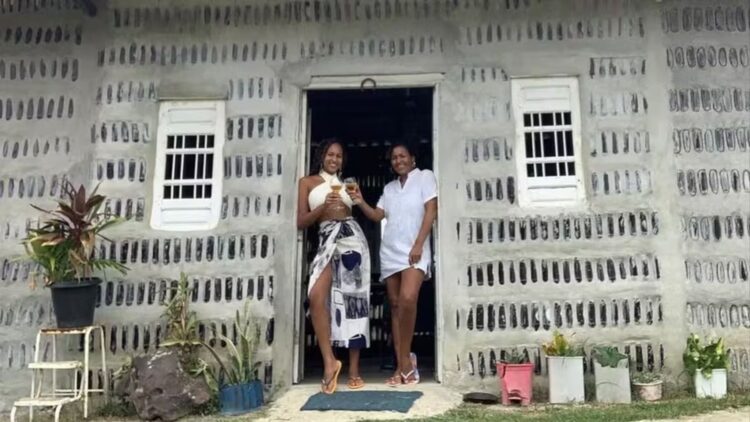Sustainable architecture is increasingly making its way in today’s society as the care of the environment and care for the environment is an issue that is becoming increasingly relevant in our times. The circular economy and ecological construction are pillars to be able to develop a self-sufficient housing. Thanks to glass bottles and recycling, recycled houses that take care of the environment are also being created. Read on for the story of Edna and Maria and their great recycled house.
The great story of the recycled house in the heart of Itamaracá
Itamaracá is an island localted in the state of Pernambuco, known for its pristine beaches, biodiversity, and, in recent years, growing urban pressure and the invetibale of mass tourism. There, just in the heart of an Environmental Protection Area, Edna and Maria Gabrielly Dantas took the decision to take action against a reality they knew well: tons of waste, especially glass bottles, abandoned after peak tourist seasons.
“My childhood was marked by creativity”
Edna, 55, a socio-environmental educator born in the impoverished Brazilian Agreste — a semi-arid region where access to water has historically been a challenge — grew up in a family that used again materials out of necessity and awareness.
“My childhood was marked by creativity. I made my own bamboo toys, recycled whatever I could. We didn’t know it was environmental activism, it was just how we survived,” she explained.
Passing on the family philosophy from generation to generation
She passed this philosophy and ideas on to her daughter, 27-year-old sustainable fashion designer Maria Gabrielly. They share not only a family bond but also a Quilombola and Indigenous cultural heritage — communities that were descendents from slaves and native peoples who keep nowadays a strong spiritual connection to nature.
An architecture of resistance
Back in time at the pandemic, seeing the amount of waste piling up on the beaches, Edna had an idea, which was building a house with glass bottles. Thus, the Salt House project was born. In two years, mother and daughter built a structure whose base was recycled wood and over 8,000 bottles, collected and reused with their own methods.
The house has seven rooms, walls made of glass assembled, partitions built from recycled pallets, and even roof tiles made from toothpaste tubes. The first room, just 20 square meters, served as a sewing workshop at the same time construction continued.
“The first year and a half was pure ingenuity: no conventional bathroom, washing dishes in a basin. But we never lost sight of our vision,” Gabrielly recalls.
Social critique made into a home
In Brazil, where access to decent housing is a structural issue, projects like this spark debate becuase it is not determined how is the right to shelter managed in a country with 5.8 million people homeless or living in extreme poverty, if we take a look to the Brazilian Institute of Geography and Statistics.
In the mean time, what can be carried out with the waste generated by the consumer economy, in specific in tourism-intensive contexts like Itamaracá? “These bottles aren’t going to disappear. Without policies to regulate their production or penalize abandonment, the least we can do is find ways to reuse them. If you throw a bottle away and it doesn’t break, it’ll still be there in a year,” Edna warns.
The reflection of gender barriers
Apart from the material challeging subejct, the construction process showed the gender barriers that still exist in the traditional male-dominated fields. “We wanted to hire labor only for specific tasks, but they always wanted to give opinions, correct us, tell us how to do things — as if we lacked capability,” Gabrielly explains. “People think one day we found a magic bottle with a genie inside. They don’t realize this requires skill, management, vision. And being a woman in this environment is doubly hard.”
To an outside observer, the Salt House might seem an architectural oddity. But to its creators, it’s the what should be done in the incoming times. A home that doesn’t hide its humble origins nor its revolutionary aim. A place built from waste that, in truth, is full of purpose.

